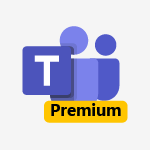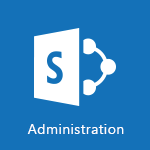SharePoint (Classic Sites) - Creating a personalized permission level Tutorial
In this video, you will learn about creating a personalized permission level in SharePoint.
The video covers how to control who can edit your site and how to assign permissions to groups of users.
This will help you customize the permissions for different teams or departments in your organization.
By following the steps outlined in the video, you will be able to create a new permission level with specific actions and permissions tailored to your needs.
This personalized permission level can then be assigned to the relevant groups in SharePoint.
- 2:46
- 2919 views
-
SharePoint (Classic Sites) - Creating a personalized permission level
- 2:46
- Viewed 2919 times
-
SharePoint (Classic Sites) - Restoring an earlier version of your document
- 1:50
- Viewed 3045 times
-
SharePoint (Classic Sites) - Recovering deleted items (Recycle bin and Second-stage recycle bin)
- 2:18
- Viewed 4890 times
-
SharePoint (Classic Sites) - Targeting content using a specific audience
- 3:35
- Viewed 2935 times
-
SharePoint (Classic Sites) - Sharing a folder or document with someone outside the company
- 3:44
- Viewed 2920 times
-
SharePoint (Classic Sites) - Restricting a document to read-only mode (Extract a document)
- 2:05
- Viewed 2831 times
-
SharePoint (Classic Sites) - Checking the granted shares
- 2:27
- Viewed 2876 times
-
SharePoint (Classic Sites) - Granting access to the SharePoint site to someone outside the company
- 3:46
- Viewed 3218 times
-
Protect a document shared by password
- 1:41
- Viewed 9586 times
-
How do I prevent the transfer of an email?
- 2:07
- Viewed 8722 times
-
Recovering deleted items (Recycle bin and Second-stage recycle bin)
- 2:18
- Viewed 4890 times
-
How do I block a sender?
- 1:01
- Viewed 3822 times
-
How do I share a document securely with Outlook?
- 1:49
- Viewed 3548 times
-
Create and manage team channel
- 1:51
- Viewed 3399 times
-
Do I share with OneDrive, SharePoint, or TEAMS?
- 2:24
- Viewed 3341 times
-
Manage permissions
- 1:10
- Viewed 3254 times
-
Restrict a folder/document to certain members of your team
- 1:49
- Viewed 3230 times
-
Granting access to the SharePoint site to someone outside the company
- 3:46
- Viewed 3218 times
-
Restrict a document to reading only
- 1:03
- Viewed 3214 times
-
How do I recognize a fraudulent email?
- 2:01
- Viewed 3054 times
-
Restoring an earlier version of your document
- 1:50
- Viewed 3045 times
-
Targeting content using a specific audience
- 3:35
- Viewed 2935 times
-
Sharing a folder or document with someone outside the company
- 3:44
- Viewed 2920 times
-
Checking the granted shares
- 2:27
- Viewed 2876 times
-
Understanding the different types and roles of team sites in SharePoint
- 3:05
- Viewed 2875 times
-
Restricting a document to read-only mode (Extract a document)
- 2:05
- Viewed 2831 times
-
How to protect an email by encryption?
- 2:41
- Viewed 2783 times
-
Creating a permission group
- 3:53
- Viewed 2738 times
-
Ensure data security during a Teams meeting
- 1:48
- Viewed 2652 times
-
General security practices in Outlook
- 1:03
- Viewed 2620 times
-
Manage permissions
- 1:03
- Viewed 1643 times
-
Understand and Secure Information Sharing in Instant Messaging
- 2:38
- Viewed 1046 times
-
Manage Privacy in Private Channels
- 2:34
- Viewed 838 times
-
Restrict a Document to Certain Team Members
- 1:50
- Viewed 830 times
-
Secure Teams Upon Creation
- 2:57
- Viewed 807 times
-
Secure a Shared Document with a Password
- 1:28
- Viewed 796 times
-
Restrict a Document to Read-Only
- 0:58
- Viewed 793 times
-
Check Granted Shares
- 00:48
- Viewed 448 times
-
Modify Sharing Rules
- 00:53
- Viewed 384 times
-
Protect My Document with a Password and Expiration Date
- 01:02
- Viewed 382 times
-
Recover deleted items
- 01:09
- Viewed 380 times
-
Best Security Practices on OneDrive
- 01:27
- Viewed 368 times
-
Restore Your OneDrive Space
- 01:42
- Viewed 356 times
-
Avoid Abusive Document Sharing
- 00:57
- Viewed 339 times
-
Block a sender
- 01:54
- Viewed 297 times
-
Recall or replace an e-mail message
- 01:45
- Viewed 255 times
-
Prevent the forwarding of an email
- 01:01
- Viewed 220 times
-
Prevent transfer for a meeting
- 01:19
- Viewed 219 times
-
Share a document securely with Outlook
- 02:21
- Viewed 219 times
-
Protect an email by encrypting
- 01:10
- Viewed 217 times
-
Identify a fraudulent email
- 02:06
- Viewed 217 times
-
Provide an overview of best security practices in Outlook
- 01:08
- Viewed 199 times
-
Guide to Using the Microsoft Authenticator App
- 01:47
- Viewed 196 times
-
Concept of Multi-Factor Authentication
- 01:51
- Viewed 187 times
-
Turn on Multi-Factor Authentication in the Admin Section
- 02:07
- Viewed 154 times
-
Manual Activation of Multi-Factor Authentication
- 01:40
- Viewed 111 times
-
Initiate a project budget tracking table with Copilot
- 02:54
- Viewed 60 times
-
Develop and share a clear project follow-up with Copilot
- 02:18
- Viewed 64 times
-
Organize an action plan with Copilot and Microsoft Planner
- 01:31
- Viewed 79 times
-
Structure and optimize team collaboration with Copilot
- 02:28
- Viewed 75 times
-
Copilot at the service of project reports
- 02:36
- Viewed 66 times
-
Initiate a tracking table with ChatGPT
- 01:35
- Viewed 63 times
-
Distribute tasks within a team with ChatGPT
- 01:26
- Viewed 105 times
-
Generate a meeting summary with ChatGPT
- 01:24
- Viewed 68 times
-
Project mode
- 01:31
- Viewed 69 times
-
Create an agent for a team
- 01:53
- Viewed 119 times
-
Install and access Copilot Studio in Teams
- 01:38
- Viewed 120 times
-
Analyze the Copilot Studio agent
- 01:25
- Viewed 67 times
-
Publish the agent and make it accessible
- 01:39
- Viewed 120 times
-
Copilot Studio agent settings
- 01:33
- Viewed 63 times
-
Add new actions
- 01:54
- Viewed 117 times
-
Create a first action
- 01:59
- Viewed 115 times
-
Manage topics
- 01:51
- Viewed 94 times
-
Manage knowledge sources
- 01:11
- Viewed 64 times
-
Create an agent with Copilot Studio
- 01:52
- Viewed 111 times
-
Access Copilot Studio
- 01:09
- Viewed 111 times
-
Get started with Copilot Studio
- 01:25
- Viewed 62 times
-
Introduction to PowerBI
- 00:60
- Viewed 181 times
-
Introduction to Microsoft Outlook
- 01:09
- Viewed 171 times
-
Introduction to Microsoft Insights
- 02:04
- Viewed 173 times
-
Introduction to Microsoft Viva
- 01:22
- Viewed 177 times
-
Introduction to Planner
- 00:56
- Viewed 185 times
-
Introduction to Microsoft Visio
- 02:07
- Viewed 173 times
-
Introduction to Microsoft Forms
- 00:52
- Viewed 181 times
-
Introducing to Microsoft Designer
- 00:28
- Viewed 246 times
-
Introduction to Sway
- 01:53
- Viewed 156 times
-
Introducing to Word
- 01:00
- Viewed 176 times
-
Introducing to SharePoint Premium
- 00:47
- Viewed 158 times
-
Create a call group
- 01:15
- Viewed 223 times
-
Use call delegation
- 01:07
- Viewed 142 times
-
Assign a delegate for your calls
- 01:08
- Viewed 217 times
-
Ring multiple devices simultaneously
- 01:36
- Viewed 145 times
-
Use the "Do Not Disturb" function for calls
- 01:28
- Viewed 136 times
-
Manage advanced call notifications
- 01:29
- Viewed 152 times
-
Configure audio settings for better sound quality
- 02:08
- Viewed 183 times
-
Block unwanted calls
- 01:24
- Viewed 149 times
-
Disable all call forwarding
- 01:09
- Viewed 154 times
-
Manage a call group in Teams
- 02:01
- Viewed 144 times
-
Update voicemail forwarding settings
- 01:21
- Viewed 141 times
-
Configure call forwarding to internal numbers
- 01:02
- Viewed 136 times
-
Set call forwarding to external numbers
- 01:03
- Viewed 158 times
-
Manage voicemail messages
- 01:55
- Viewed 206 times
-
Access voicemail via mobile and PC
- 02:03
- Viewed 224 times
-
Customize your voicemail greeting
- 02:17
- Viewed 134 times
-
Transfer calls with or without an announcement
- 01:38
- Viewed 134 times
-
Manage simultaneous calls
- 01:52
- Viewed 144 times
-
Support third-party apps during calls
- 01:53
- Viewed 177 times
-
Add participants quickly and securely
- 01:37
- Viewed 141 times
-
Configure call privacy and security settings
- 02:51
- Viewed 139 times
-
Manage calls on hold
- 01:20
- Viewed 148 times
-
Live transcription and generate summaries via AI
- 03:43
- Viewed 137 times
-
Use the interface to make and receive calls
- 01:21
- Viewed 148 times
-
Draft a Service Memo
- 02:33
- Viewed 194 times
-
Extract Invoice Data and Generate a Pivot Table
- 03:26
- Viewed 181 times
-
Formulate a Request for Pricing Conditions via Email
- 02:32
- Viewed 267 times
-
Analyze a Supply Catalog Based on Needs and Budget
- 02:41
- Viewed 235 times
-
SharePoint Page Co-Editing: Collaborate in Real Time
- 02:14
- Viewed 93 times
-
Other Coaches
- 01:45
- Viewed 194 times
-
Agents in SharePoint
- 02:44
- Viewed 157 times
-
Prompt coach
- 02:49
- Viewed 180 times
-
Modify, Share, and Install an Agent
- 01:43
- Viewed 171 times
-
Configure a Copilot Agent
- 02:39
- Viewed 166 times
-
Describe a copilot agent
- 01:32
- Viewed 190 times
-
Rewrite with Copilot
- 01:21
- Viewed 163 times
-
Analyze a video
- 01:21
- Viewed 189 times
-
Use the Copilot pane
- 01:12
- Viewed 181 times
-
Process text
- 01:03
- Viewed 169 times
-
Create an insights grid
- 01:19
- Viewed 284 times
-
Generate and manipulate an image in PowerPoint
- 01:47
- Viewed 178 times
-
Interact with a web page with Copilot
- 00:36
- Viewed 199 times
-
Create an image with Copilot
- 00:42
- Viewed 295 times
-
Summarize a PDF with Copilot
- 00:41
- Viewed 193 times
-
Analyze your documents with Copilot
- 01:15
- Viewed 191 times
-
Chat with Copilot
- 00:50
- Viewed 178 times
-
Particularities of Personal and Professional Copilot Accounts
- 00:40
- Viewed 273 times
-
Data Privacy in Copilot
- 00:43
- Viewed 193 times
-
Access Copilot
- 00:25
- Viewed 297 times
-
Use a Copilot Agent
- 01:24
- Viewed 202 times
-
Modify with Pages
- 01:20
- Viewed 206 times
-
Generate and manipulate an image in Word
- 01:19
- Viewed 198 times
-
Create Outlook rules with Copilot
- 01:12
- Viewed 192 times
-
Generate the email for the recipient
- 00:44
- Viewed 184 times
-
Action Function
- 04:18
- Viewed 149 times
-
Search Function
- 03:42
- Viewed 201 times
-
Date and Time Function
- 02:53
- Viewed 182 times
-
Logical Function
- 03:14
- Viewed 275 times
-
Text Function
- 03:25
- Viewed 210 times
-
Basic Function
- 02:35
- Viewed 174 times
-
Categories of Functions in Power FX
- 01:51
- Viewed 199 times
-
Introduction to Power Fx
- 01:09
- Viewed 176 times
-
The New Calendar
- 03:14
- Viewed 298 times
-
Sections
- 02:34
- Viewed 183 times
-
Customizing Views
- 03:25
- Viewed 179 times
-
Introduction to the New Features of Microsoft Teams
- 00:47
- Viewed 296 times
-
Guide to Using the Microsoft Authenticator App
- 01:47
- Viewed 196 times
-
Turn on Multi-Factor Authentication in the Admin Section
- 02:07
- Viewed 154 times
-
Manual Activation of Multi-Factor Authentication
- 01:40
- Viewed 111 times
-
Concept of Multi-Factor Authentication
- 01:51
- Viewed 187 times
-
Use the narrative Builder
- 01:31
- Viewed 234 times
-
Microsoft Copilot Academy
- 00:42
- Viewed 193 times
-
Connect Copilot to a third party app
- 01:11
- Viewed 204 times
-
Share a document with copilot
- 00:36
- Viewed 192 times
-
Configurate a page with copilot
- 01:47
- Viewed 194 times
-
Use Copilot with Right-Click
- 01:45
- Viewed 959 times
-
Draft a Service Memo with Copilot
- 02:21
- Viewed 207 times
-
Extract Invoice Data and Generate a Pivot Table
- 02:34
- Viewed 235 times
-
Summarize Discussions and Schedule a Meeting Slot
- 02:25
- Viewed 298 times
-
Formulate a Request for Pricing Conditions via Email
- 02:20
- Viewed 368 times
-
Analyze a Supply Catalog Based on Needs and Budget
- 02:52
- Viewed 349 times
Objectifs :
This document aims to provide a comprehensive guide on managing permissions in SharePoint, specifically for SharePoint administrators and site collection managers. It outlines how to control editing rights for different user groups, create custom permission levels, and navigate the SharePoint interface effectively.
Chapitres :
-
Introduction to SharePoint Permissions
In SharePoint, managing permissions is crucial for controlling who can edit or view content on your site. For instance, you may want to allow financial service staff to edit lists while restricting the marketing department to view-only access. This document will guide you through the process of setting up and customizing permissions. -
Understanding Permissions
Permissions in SharePoint dictate what actions users can perform, such as editing items in a list or creating new sites. However, you cannot assign individual permissions directly to users. Instead, permissions are grouped under permission levels, which can then be assigned to groups of users. -
Default Permission Levels
SharePoint includes several default permission levels, such as 'Contribute' and 'Read'. If these do not meet your requirements, you have the option to create new permission levels tailored to your needs. -
Creating and Managing Permission Levels
To create or modify permission levels, you must belong to a SharePoint group authorized to manage permissions. Typically, this includes members of the owners group or site collection administrators. Follow these steps to create a new permission level: 1. Navigate to the top-level site in your site collection. 2. Click on the gear icon (⚙️) to access settings. 3. Select 'Site Settings'. 4. In the 'Users and Permissions' section, click on 'Site Permissions'. 5. In the permissions tab, click on 'Permission Levels'. 6. On the Permission Levels page, select 'Add a Permission Level'. 7. Enter a name and description for the new permission level. 8. In the permissions area, activate all checkboxes corresponding to the personal list and site permissions you wish to include. 9. Click 'Create' to finalize your new permission level. -
Conclusion
By following the steps outlined above, you can effectively manage permissions in SharePoint, ensuring that users have the appropriate access levels based on their roles. Customizing permission levels allows for greater flexibility and control over your SharePoint environment.
FAQ :
What are permissions in SharePoint?
Permissions in SharePoint are settings that control what actions users can perform, such as editing lists or creating sites. They help manage access to content and functionalities.
How can I create a new permission level in SharePoint?
To create a new permission level, you need to be part of a SharePoint group authorized to manage permissions. Navigate to Site Settings, select Site Permissions, and then click on Permission Levels to add a new level.
Can I assign individual permissions to users in SharePoint?
No, you cannot assign individual permissions to users in SharePoint. Instead, you group associated permissions under a permission level and assign that level to a group of users.
What is the difference between the 'Contribute' and 'Read' permission levels?
'Contribute' permission allows users to add, edit, and delete items in lists, while 'Read' permission only allows users to view items without making changes.
What should I do if the default permission levels do not meet my needs?
If the default permission levels do not meet your needs, you can create new ones by following the steps to add a permission level in the Site Permissions settings.
Quelques cas d'usages :
Managing Access for Financial Services Staff
In a financial services organization, the SharePoint administrator can create a custom permission level that allows staff to edit lists related to financial data while restricting marketing department members to view-only access. This ensures sensitive information is protected while enabling collaboration among relevant teams.
Customizing Permissions for Project Teams
A project manager can use SharePoint to create a specific permission level for a project team, allowing them to edit project documents and lists while preventing other departments from accessing or modifying these files. This enhances project security and streamlines collaboration.
Setting Up a Knowledge Base
An organization can set up a knowledge base in SharePoint where employees can contribute articles and resources. By creating a custom permission level that allows contributions from specific teams while restricting others to read-only access, the organization can maintain quality control over the content.
Training New Employees
When onboarding new employees, a SharePoint administrator can create a permission level that allows them to access training materials and resources without the ability to edit or delete content. This ensures that new hires have the information they need while maintaining the integrity of the training materials.
Glossaire :
SharePoint
A web-based collaboration platform developed by Microsoft that integrates with Microsoft Office. It is used for storing, organizing, sharing, and accessing information from any device.
Permissions
Settings that determine what actions users can perform in SharePoint, such as editing items in a list or creating a site.
Permission Levels
Groups of associated permissions that can be assigned to users or groups in SharePoint. Examples include 'Contribute' and 'Read'.
Site Collection Administrator
A user who has full control over a site collection in SharePoint, including managing permissions and settings.
Owners Group
A default group in SharePoint that typically has full control over a site, allowing members to manage permissions and settings.
Customization Options
Various settings and configurations available in SharePoint that allow administrators to tailor permissions and functionalities to meet specific needs.




